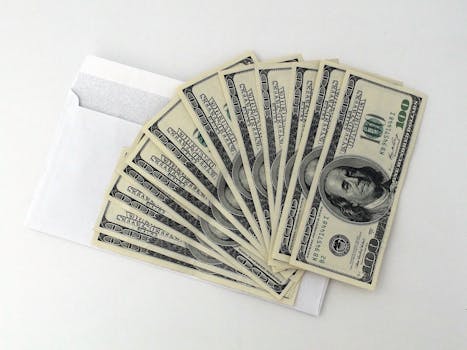Credit Tips
Annual Fees, APR, and Interest: The Costs Behind Credit Cards
Get clarity on annual fees, APR, and real credit costs with smart payment strategies and easy comparisons. Choose a card that works for you and avoid hidden charges or unnecessary fees. Read now!
Advertisement

Many of us swipe our cards, grateful for the convenience, but real costs can hide until the statement arrives. That’s where credit costs really matter.
Understanding every piece of the credit costs puzzle, from annual fees to APR and real-world interest charges, helps you make choices that align with your financial well-being. Piling up charges blindly creates a financial pitfall.
You deserve clarity about credit costs thanks to clear examples, actionable tips, and hands-on comparisons. Dive in for steps you can use today—no confusion, no fluff.
Pinpointing Key Charges on Credit Cards: Start With the Basics
Spotting the difference between annual fees, interest, and late charges gives you essential control over your credit costs. These fees can impact the real value you get from your card.
It’s tempting to ignore fine print, but knowing the structure of common credit card fees is almost like scanning a restaurant menu before you order. You want value, not unwelcome surprises.
Annual Fees and Their True Impact
Annual fees get charged once a year in a lump sum—expect $35 to $550 depending on the card type. Premium and rewards cards are most likely to charge you this fee.
Cards with high annual fees usually tout hefty rewards or travel perks, tempting for frequent users. If your yearly rewards and benefits don’t cover the annual fee, you’re losing value every year.
Before applying, calculate the value you’ll actually use—don’t just estimate. For example, jot down rewards you’ve used in the last year. Compare them direct with the annual fee for a real picture.
APR: More Than Just a Number
Your card’s APR, or annual percentage rate, signals the ongoing price of borrowing money. Lenders list APR as a yearly cost, but you’ll feel it month by month if you carry a balance.
Multiple APRs can apply: purchases, cash advances, and balance transfers. Each type can have a distinct, sometimes variable, rate. Cards also boost your APR if you pay late—a costly penalty.
To compare, use online APR calculators or your lender’s informational page. A 20% APR means $200 yearly on a $1,000 balance if you don’t pay in full—numbers stack up fast over months.
| Fee/Charge | Typical Range | When Applied | User Tip |
|---|---|---|---|
| Annual Fee | $0 – $550 | Once per year | Get value in perks or switch to no-fee cards |
| APR (Purchases) | 13% – 25% | Monthly on balances | Pay in full to avoid this cost entirely |
| Late Payment | $29 – $40 | Per missed due date | Set up automatic payments |
| Cash Advance Fee | 3% – 5% | Every cash withdrawal | Use only in emergencies |
| Foreign Transaction | 0% – 3% | Every international purchase | Choose cards with no FX fees when traveling |
Separating Essential Fees From Forgettable Extras
Cutting through the clutter of credit costs starts by identifying which much-touted charges you’ll genuinely encounter. Only some fees matter long-term—some only appear with rare card use.
Treat every new credit card offer as an opportunity to review line-by-line which costs will shape your everyday spending and which can be ignored or sidestepped with smart habits.
Budget For True Everyday Charges
Include these actionable steps in your card routine:
- Track your payment due dates—missing one leads to a late fee, sometimes APR hikes, adding $29–$40 to your monthly credit costs unnecessarily.
- Evaluate if you’ll use rewards that actually cover or exceed your annual fee; unused perks turn into wasted money and high credit costs per reward point.
- Review your monthly statements for unfamiliar fees—contest anything unexpected quickly to avoid permanent increases to your credit costs.
- Set payment reminders; if your card hikes fees or APRs, you’ll notice faster and can request better terms before changes lock in.
- Ask card issuers what charges, including penalty APR, reset after six months of timely payments—timely action shrinks future credit costs.
Getting comfortable with these routines keeps credit costs visible, never buried in small print or forgotten charges.
Spotting Sneaky, Rarely-Incurred Fees
Focus on which fees practically matter. These often hide until you need an unusual service.
- Balance transfer fees seem avoidable but appear if you restructure debt—factor them into every new offer’s true credit costs.
- Cash advance fees not only cost 3% to 5%, but trigger immediate interest—use sparingly or seek alternatives before emergencies arise.
- Returned payment fees happen if a payment bounces, even accidentally; keep track of bank balances to dodge a $35+ charge that adds to credit costs.
- Foreign transaction fees surface with each non-US dollar charge—travelers and online overseas shoppers should filter for no-foreign-fee credit cards to reduce credit costs.
- Card replacement and expedited shipping might cost $15–$30—and are avoidable by keeping your card secure and reporting issues promptly.
Flagging these in advance prepares you for every type of real-world credit cost, not just the headline fees.
APR Breakdown: What It Means for Everyday Spending
Knowing the nuts and bolts of your card’s APR puts you in the driver’s seat when managing credit costs. Understanding how rates compound lets you fine-tune your payment strategies.
Lenders use daily or monthly compounding—meaning, they calculate charges every day your balance sits unpaid. Little changes make a big difference to your annual credit costs over time, and simple daily actions can trim those costs.
Daily Versus Monthly Compounding
Daily compounding applies a portion of the APR to your unpaid balance every day—so the next day’s interest is charged on interest already added. Monthly compounding adds interest once per cycle, creating lower overall charges for the same rate.
If your APR is 20% and you carry a $1,000 balance, daily compounding creates slightly more credit costs than monthly compounding. Most major cards use daily compounding—always check your agreement’s calculation method.
To spot this, look for terms like “daily periodic rate”—multiply by your daily balance and the number of days. Monthly compounding, if available, is rare and reduces total yearly credit costs slightly.
Introductory and Penalty APRs
Many cards lure in new users with a 0% introductory APR on purchases or balance transfers. This helps reduce short-term credit costs, allowing interest-free payments if you plan big purchases carefully.
Not all purchases are included; cash advances and missed payments typically void your intro APR. Mark the calendar with monthly dates for intro rates to expire—then pay off any balance before regular rates kick in, keeping total credit costs in check.
If you pay late or violate other terms, penalty APRs can leap to 29% or more. This spike has a massive impact on long-term credit costs, so keeping payments on time protects your rates for the future.
Interest Charges in Real Terms: Concrete Scenarios
Calculating what you’ll owe makes credit costs easy to spot in your monthly budget. Applying numbers to potential balances illustrates why paying more than the minimum saves you hundreds each year.
Let’s anchor this with a practical script: “If I spend $500 and pay only the minimum $25 monthly at 24% APR, how much in interest am I actually paying?”
Repayment Timelines: Paying Minimum vs. Paying In Full
Paying only the minimum means it can take years to clear a balance—sometimes a decade. Interest tacks onto your original purchase, compounding into much higher credit costs over time.
For every $500 at 20% APR, paying just $25 monthly stretches repayment to about 27 months, growing total credit costs by nearly $120 in interest. Paying in full each month cuts those costs to zero.
Create an “interest audit” by multiplying your highest balance by your APR, then divide by twelve. This monthly estimate from your statement puts projected credit costs front and center.
Balance Transfers as a Cost-Reduction Tool
Moving high-interest balances to a new card with a 0% promotional APR can slice your annual credit costs substantially, but only if you plan the timeline precisely and repay before rates change.
If a $2,000 balance at 22% moves to a new card at 0% for 12 months with a 3% fee, your upfront cost is $60. But if you pay off the balance within the promo period, no interest is added, keeping overall credit costs far lower.
After the intro period, rates might jump—so always mark the end date and ensure you can finish paying before the higher APR resumes, preventing surprise charges on your remaining balance.
Strategies to Cut Costs with Smarter Card Choices
Filtering cards with your budget and spending style in mind keeps credit costs low without sacrificing rewards. Each element—from annual fee structure to special discounts—should match your real-world habits.
Rule of thumb: don’t chase big rewards or flashy perks you’ll rarely use; choose practical benefits that match your daily credit costs and payback goals.
Zero-Fee, Low-Interest, and Special-Use Cards
No-annual-fee cards suit users who don’t chase premium perks and want to reduce annual credit costs to zero. These cards offer straightforward value and never surprise you with renewal charges.
Low-interest cards benefit people who expect to carry a balance—look for APRs in the 12%–16% range to minimize credit costs when full monthly payments aren’t realistic.
Store cards and secured cards have unique credit costs: store cards may tempt you to overspend, while secured cards offer credit building for those with low scores. Each card type presents a cost-benefit tradeoff.
Rewards Cards: Perks Without Penalties
Rewards cards can reduce real-world credit costs if you redeem points or cashback for regular purchases—groceries, gas, online orders. But missing payments erases these savings due to fees and interest.
Best tactic: automate your payments and redeem rewards frequently. Waiting too long can result in point expiration or devaluation, cancelling out any credit costs saved.
Decide if a card’s points system matches your lifestyle. If you don’t travel, travel perks are wasted. Opt for everyday rewards to maximize your annual benefits relative to credit costs incurred.
Maximizing Payment Strategies for Lower Credit Costs
Setting up proactive payment plans drives down your overall credit costs, giving you more control over how much you spend on interest and fees over time.
Anticipate your average statement amount and structure your payments so you pay in full—or as close to full—as possible each cycle. This habit turns expensive credit costs into minor, manageable expenses.
Using Autopay and Alerts to Avoid Fees
Enable autopay for the statement balance—never just the minimum. This simple step prevents late fees and penalty APRs, which spike long-term credit costs more than any other avoidable mistake.
Set calendar alerts at least three days before your statement is due. If unexpected issues arise—like a bounced payment—you have time to contact your issuer and prevent punitive charges.
Review these payment settings annually. Run a quick checkup of your online account’s notification system and update if your financial routines change, adjusting to further reduce credit costs.
Paying Early and Frequently
Regular mid-cycle payments, not just at the deadline, lower your average daily balance—minimizing your monthly credit costs through simple math. Every extra payment cuts a few days’ worth of interest charges.
Build a habit: after every payday, send a partial payment. This keeps your utilization low, improving your credit score as a bonus. Seeing shrinking statements can also motivate you to stay on top of your finances.
If you use big purchases on credit cards, break up the payment into smaller chunks over the month. This approach makes each purchase more manageable and keeps surprise interest—and overall credit costs—in check.
Choosing the Right Card for Your Credit Profile
Selecting a card that’s tailored to your financial health and goals ensures you won’t pay unnecessary credit costs just to maintain an account or build your score.
Start by checking your current credit score—good or excellent scores unlock lower APRs and better terms, substantially reducing the credit costs compared to subprime or starter cards.
Matching Your Card to Your Score
If your score sits above 700, focus your search on cards with sub-17% APRs and generous, accessible rewards. You’ll find cards that minimize credit costs without trading away valuable benefits.
Scores between 600 and 700 still offer choice. Look for products that offer gradual APR reductions after a year or automatic credit line increases when you pay on time—a good way to trim future credit costs.
For lower scores or thin files, secured cards are an option. While initial APRs can be high, timely payments rapidly build credit, ultimately letting you graduate to cheaper cards with lighter credit costs.
Monitoring Your Account for Hidden Cost Creep
Review every monthly statement for new fees or interest adjustments. Credit costs can creep up through unnoticed changes in terms; alertness lets you dispute, negotiate, or switch cards before charges grow unchecked.
If your card company offers a free credit score update, use it as a check-in to ensure you’re still in a qualifying tier for your card’s best terms. Rising scores should prompt requests for lower rates to cut credit costs further.
Staying vigilant also means examining reward expirations, benefit changes, and foreign transaction fee shifts—they quietly raise effective credit costs unless addressed promptly with your issuer.
Your Path Forward: Managing Fees and Interest With Confidence
Annual fees, APRs, and interest all shape the true credit costs of every card you carry. A careful approach lets you pick the best options for your needs and cut what you pay unnecessarily each month.
Keeping your guard up—monitoring statements, automating payments, and comparing card offers—translates to lower credit costs, more financial flexibility, and fewer nasty surprises on your bill.
Let your next card application be guided by the real value you get, not just the promise of perks. The right move today can keep your credit costs in check both now and well into the future.
Trending Topics

NAB Low Fee Credit Card review: Say Hello to More Savings
Meet your new money-saving BFF! NAB Low Fee Credit Card has a $30 annual fee and up to 55 interest-free days. Perfect for savvy spenders!
Keep Reading
Discover Personal Loan Review: From $2,500 to $40,000 with clear terms
Looking to consolidate debt? Discover Personal Loan offers clear terms, fixed payments, and next-day funding.
Keep ReadingYou may also like

Greater Bank Unsecured Personal Loan review: No monthly fees!
Get the facts on the Greater Bank Unsecured Personal Loan. A no-collateral option with quick approvals—learn if it’s right for you.
Keep Reading
Hume Bank Personal Loan review: From $2,000 up to $100,000
A personal loan with no monthly fees, free redraws, and flexible terms? See how Hume Bank Personal Loans stand out in the market.
Keep Reading